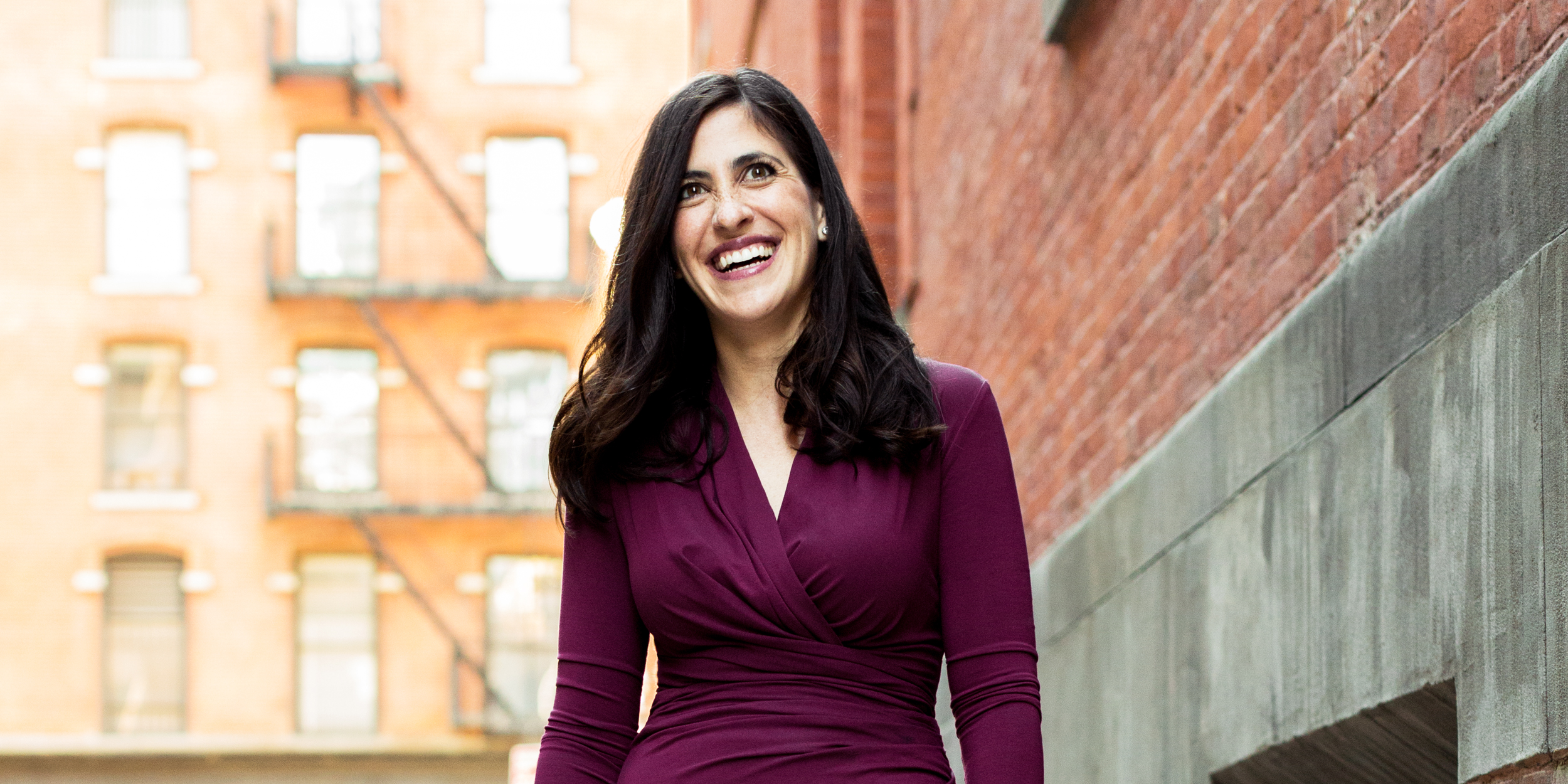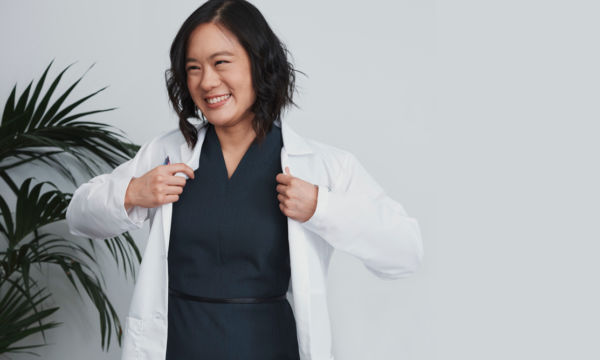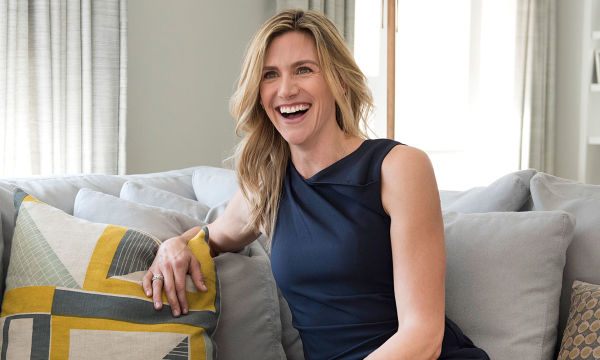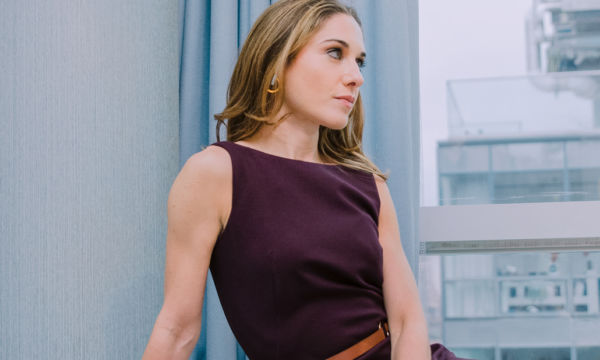Dr. Talia Kaden on Intra-ocular Medicine and Soda Bottle Surgery Practice
August 17, 2016 | Filed in: Woman of the Week
We love taking a look at the fascinating lives (and closets) of our favorite customers. Here, ophthalmology resident Dr. Talia Kaden talks intra-ocular medicine, daily mom chats, and soda bottle surgical practice.
I ALWAYS KNEW I wanted to do something with my hands. I was very technically inclined when I was little, and in high school I loved sewing, robotics, and the Science and Math Olympiads. I just assumed I would do something along those lines, perhaps get a Ph.D. and do research.
I DIDN’T THINK I was going to be a doctor. My father is also an ophthalmologist, and I was convinced I would do something totally different. You always think you’ve fallen very far from the tree, and then it turns out you’re right below it. My father has loved his career—he would come home and talk about his surgeries over dinner. There’s a technique in cataract surgery called a capsulorrhexis, where the goal is to cut a perfect circle in the anterior capsule, or the front of the lens. I have very strong childhood memories of my father teaching us how to do it on the wrapper of a soda bottle. Now it’s 20 years later, and that’s what I’m doing at work.

Talia wears the Lena dress in port.
DURING COLLEGE, I studied applied math and chemistry. One of my professors suggested that I think about finance, and so I did a summer internship at a big bank in New York. They offered me a job, but something about it didn’t feel quite right. That fall, I remember going for a run with a friend and telling her, “I don’t know what I’m going to do. This offer is fantastic, but I think I want to go to medical school.” It was the first time I’d said that out loud.
THERE ARE NO SHORTCUTS or leapfrogging in medical training. You can never skip ahead by being really good at your job. Because I worked and took post-baccalaureate classes for some time between undergrad and med school, I’m a little bit older than some of my colleagues, but it was certainly the right path for me.
IF I NEED TO BUCKLE DOWN on research or a paper, I like to go to busy coffee shops. Personally, it helps to be in a noisy environment with my earphones in, listening to classical music. If I’m home, I’ll just end up cleaning the house or chasing my daughter around the apartment.
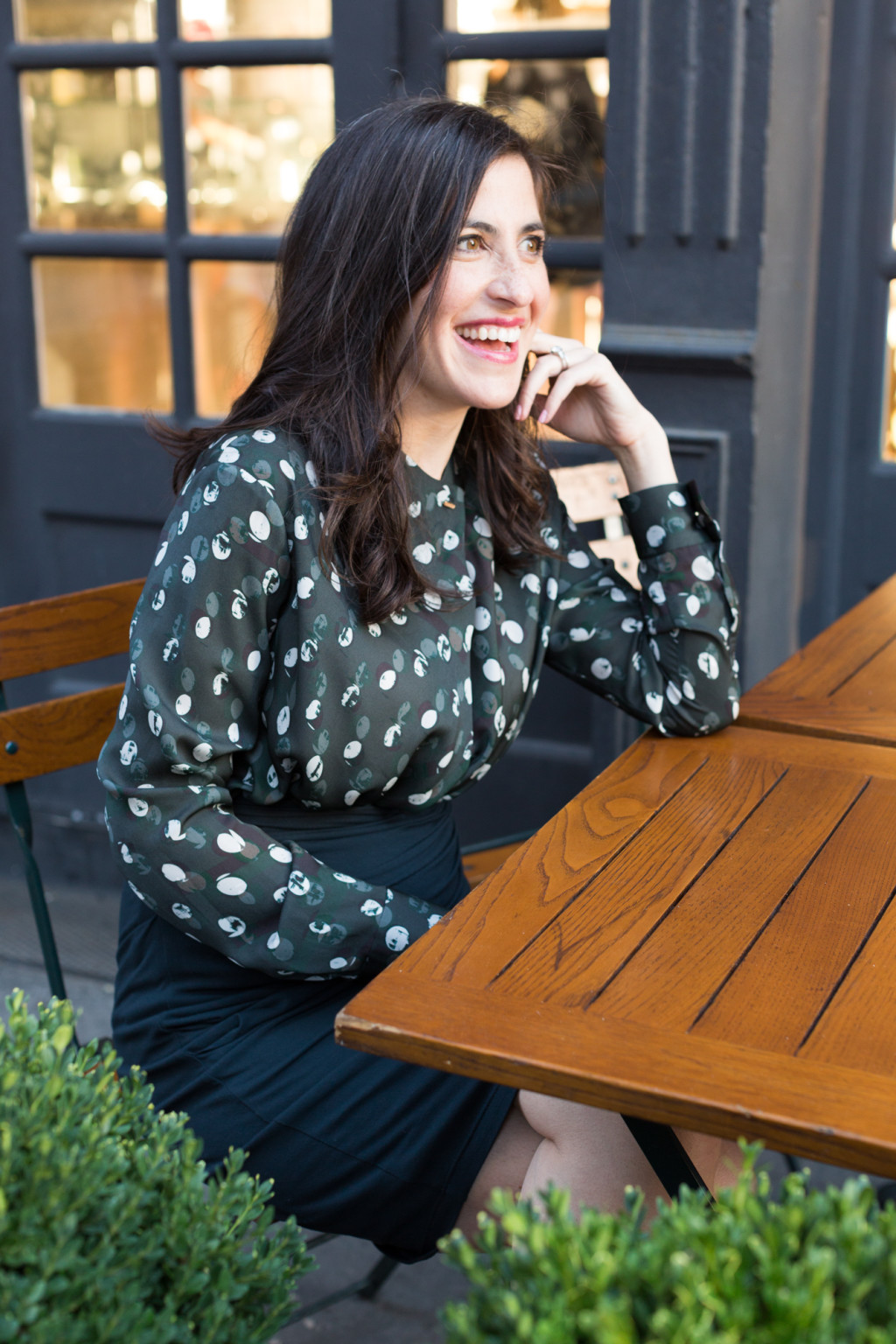
Talia wears the Apfel 2.0 shirt in eclipse with the Soho skirt in midnight green.
I’M A RESIDENT AT NYU, so we cover a number of different hospitals. I’ve been at Bellevue for the last few months, which is the city’s largest trauma center. It’s an amazing place to train, and very demanding, but also rewarding. You get to see an incredible cross-section of people from all over the city and all walks of life.
I WEAR MY MM DRESSES everywhere—to clinic, presentations, an anniversary dinner with my husband, and while interviewing for residency. My favorite is the Toi, because the A-line makes it easy for me to examine my patients at the slit lamp (if I wear a pencil skirt, it’s like trying to sit sidesaddle).
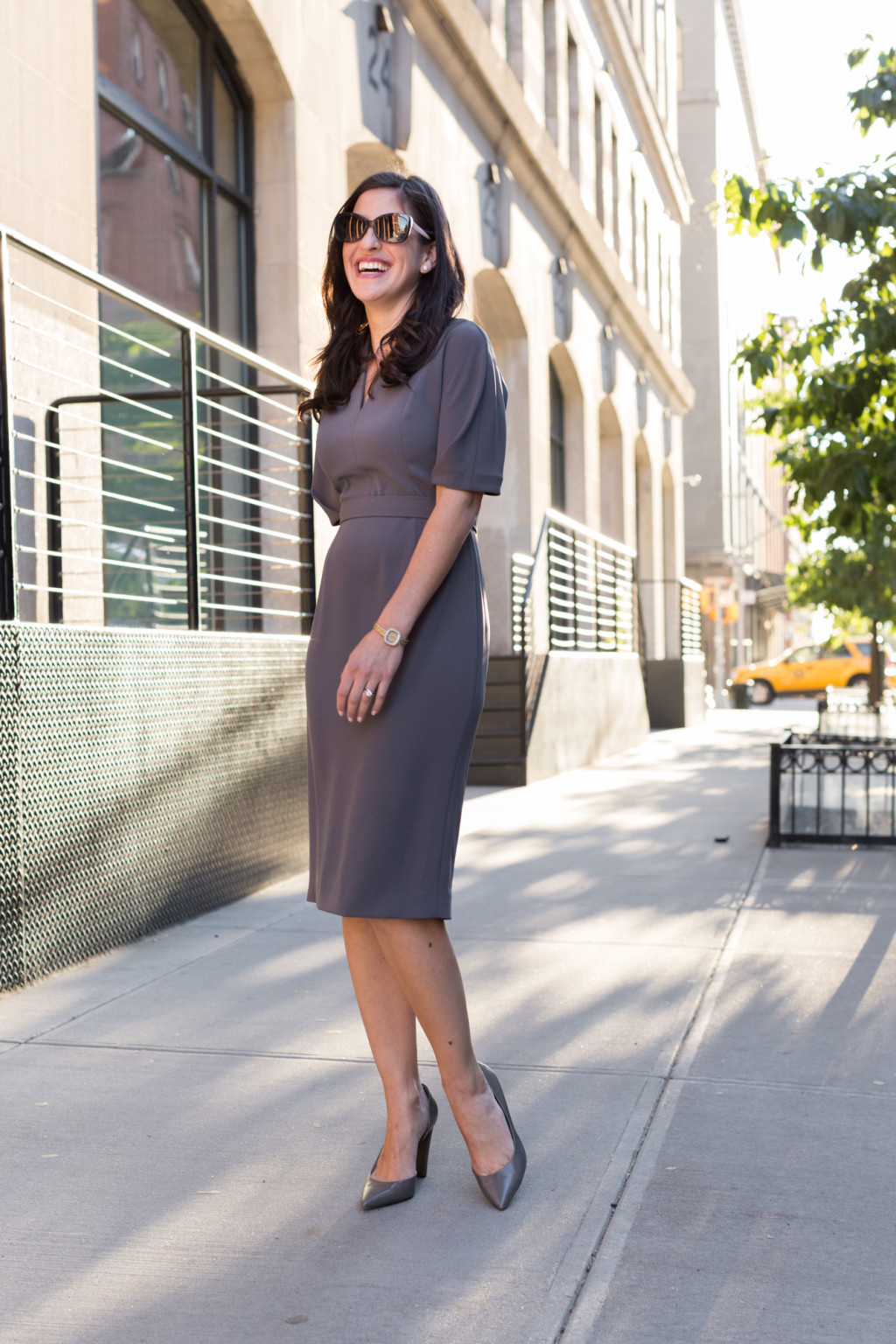
Talia wears the Ingrid dress in monsoon.
HAVING A CHILD during residency isn’t easy. I was a first-year resident when my daughter was born, and didn’t take a lot of time off. My first day back, I was at work for fourteen hours, and then I was on call for ten of the next fourteen days. I was very lucky that I had a healthy pregnancy and a healthy baby, but I hope that one day the medical field has a better system in place for personal leave—not just for people having kids, but also when someone gets sick, or there’s a death in the family.
MY HUSBAND is incredibly supportive. We both have busy careers—he commuted back and forth to his job in Washington during my pregnancy, and moved to New York permanently right before our daughter was born. But we’re a team—I could not do what I do without him. And he’s a great father.
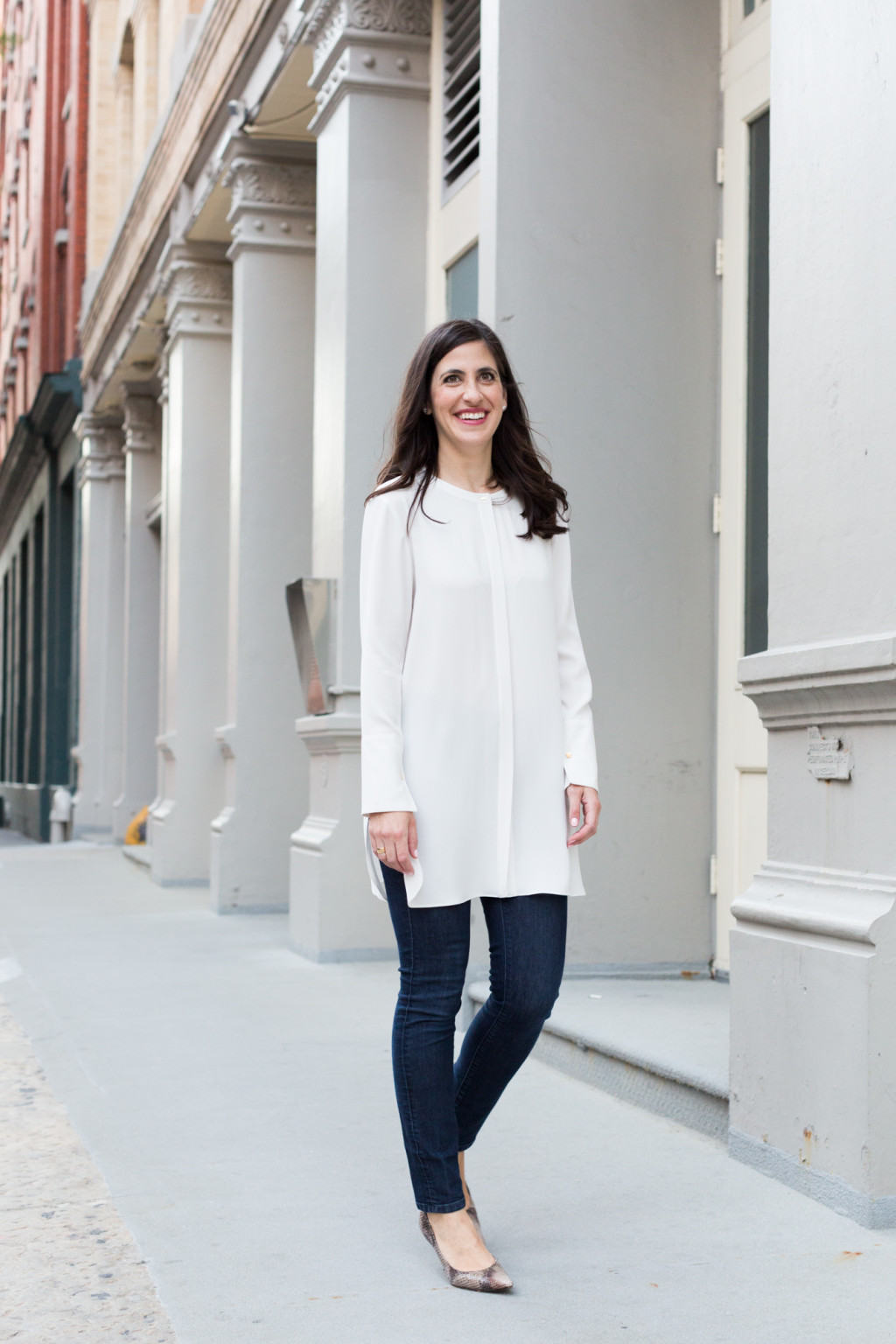
Talia’s weekend outfit: The Austen tunic and jeans.
I BECAME INTERESTED in ophthalmology during medical school, when I realized I really liked the outpatient experience. Patients can become a little anonymous when they’re in a hospital setting, in a hospital gown. Something I love about medicine is connecting with people, and I enjoyed having patients who came in their own clothing—to me, it’s a clear a reminder of the breadth of their lives. And of course, sight is such a fundamental sense; to play a role in preserving it feels meaningful and motivating.
INTRA-OCULAR SURGERY is a whole new ball game. I’m at the very beginning of the learning curve, and I’m learning an entirely new way of moving my hands. You operate under a microscope, and while they say it becomes second nature with time, at first you’re creating brand new muscle memory with each case. It’s fascinating. I think I have an amazing job.

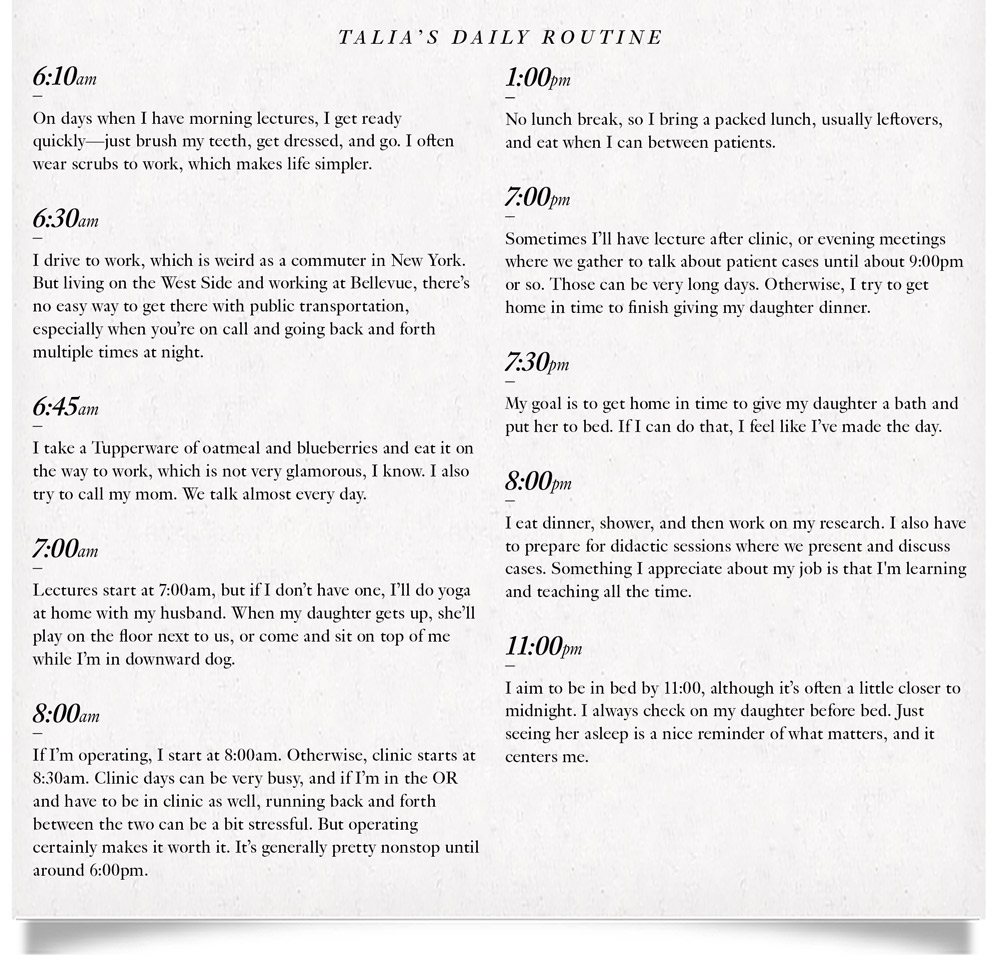
Photos by Frances F. Denny.





